Samsung Galaxy Note 3 Review
by Brian Klug on October 1, 2013 9:00 AM EST- Posted in
- Smartphones
- Samsung
- Mobile
- Android 4.3
- galaxy note 3
S-Pen
I was a tablet user for just over 4 years, but when I mean tablet I mean the old school kind with an active digitizer and Windows, before the age of capacitive multitouch everywhere. With the original Note, I was excited to see active digitizer finally represented again in a mobile device, complete with all the hover and pressure features that come with it. I still find it impossible to use styli on capacitive panels since they lack the resolution and fidelity for the kind of writing I used to do.
With the Note 3, neither quality of the digitizer nor the S-Pen formula change, and that’s a good thing. It’s still the same pen, and from what I can tell, still the same sensitivity and hover distance, and still Wacom based as well. I’m not going to go super in-depth with S-Pen since by this time it should be something readers are familiar with since we’re on the third iteration of Note (and multiple tablets) with the pen.
The Note 3 stows the pen inside itself in basically the same spot as its predecessors, and has the same pen-removal detection and single button on the pen itself. I have no complaints with how it feels or my ability to hold it and write on the screen, and the Note continues to do wrist rejection very well so you can rest your hand on it for making fine grained drawings with a bit of added support.
Perhaps the biggest single improvement with the Note 3 from the perspective of the pen is that it now triggers the menu and back capacitive buttons on the front of the Note 3. I found it confusing on the Note 2 and Note that with the pen out I had to switch between this weird finger and pen modality, rather than be able to accomplish everything with either appendage. With the Note 3, it’s now possible to do just that – it sounds crazy but that single change is the biggest thing that made me instantly happy with the Note 3 the second I pulled the pen out, just being able to hit menu and back with the stylus and have it actually work finally.
With the Note 2 I started to feel like the features that surrounded the pen were getting overwhelming, and I wasn’t sure what feature I should be using at a given time. There’s definitely feature creep each generation as things get added but never really removed, with the Note 3 Samsung does a great job mitigating most of this by surfacing what they believe are the standout features of the S-Pen experience in a popup dialog with a ringed interface and shortcuts to functions. Previously removing the pen would jump you to a special homepage with relevant links if you were on a homepage. Instead if you pull the pen out, this new overlay appears. The overlay makes a lot more sense and has helped me use the pen a lot more than I did previously.
I remember joking with another reviewer that I suspected a large number of Note owners used the pen once, put it back, and never really bothered or understood it after that, and instead were just after the Note for its large display. That sort of mirrored my own use with the Note previously since I’m not artistically inclined or sitting in lectures writing down equations and graphs and diagrams as fast as I possibly can anymore (though soon that hopefully will return with grad school). With the Note 3 and this new interface also shared with the Note 10.1 2014 edition I’m using the pen a lot more since it’s a reminder of what’s really handy.
The ring switcher has shortcuts to action memo, scrap booker, screen write, s finder, and pen window. You can also get to this switcher by hovering and pressing the button on the pen.
Action memo pops up a sticky note that you can immediately start writing on, and it’s the most useful honestly. These notes can then be transcribed on the fly and used to either create contacts or events or look at a location in google maps. The idea is that you’d quickly jot down a phone number and name, or an address, and then be able to act quickly on them or save it for later. I find this works surprisingly well. Samsung says their handwriting transcription engine is also even more accurate this generation, but I don’t have specifics.
Scrap booker lets you grab content displayed on the screen and store it for later, this seems to also parse what’s in a view and intelligently take metadata along with it, for example web pages, YouTube videos, and maps will all get pulled along.
Screen write is a perpetual favorite, it takes a screenshot that you can then annotate or draw on top of. Handy and useful if you need to send something with a pithy remark or drawing to someone either for work or play.
S-Finder is a universal search function that parses through all your notes and memos and writing for a string entered in the search bar. Samsung is always transcribing notes so they’re searchable, this surfaces everything including those hand written notes. I’m reminded of how OneNote search worked, very useful if you’re taking a lot of notes.
Pen window is like a new version of multi window, except instead of snappable windows it’s a viewport of arbitrary size matching roughly what you draw on screen. In practice though the windows are the same aspect ratio as the display (16:9) just whatever rough size you’ve drawn the square and scaled to fit. Samsung continues to try and solve the multi-window problem and admittedly does a novel job here given the constraints of the Android platform. Not every app can be put in one of these smaller windows, rather a subset of the multi window applications.
S Note and the other applications that I remember being present on the Note 2 are still around, as well, it’s just this smaller subset that’s exposed and promoted through the ring switcher. Of course you can also disable the action switcher menu and have pen detachment launch action memo or do nothing at all.
I think S Pen is novel, and what’s important to me works well (the equation parsing engine is supposedly even better and worked with what I fed it), I’m just more sold on the Note as a platform because of screen size than I am note taking. Although the Note 3 doesn’t have the killer third party app attention that draw something had with the original Note, there is Snapchat and a variety of others though that might make the S-Pen a very attractive thing for people looking at the Note for something beyond note taking.


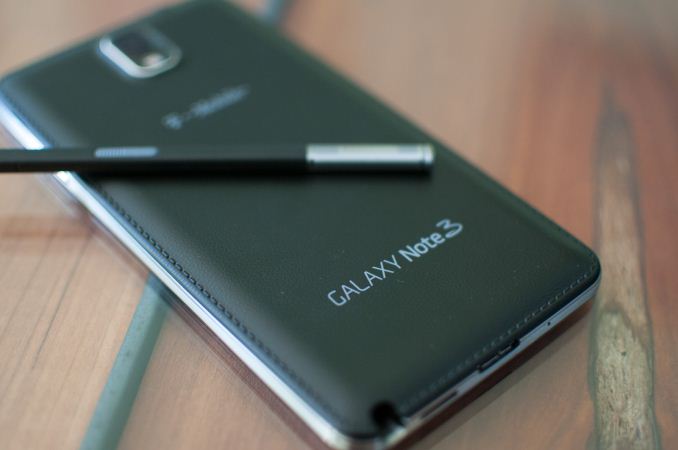



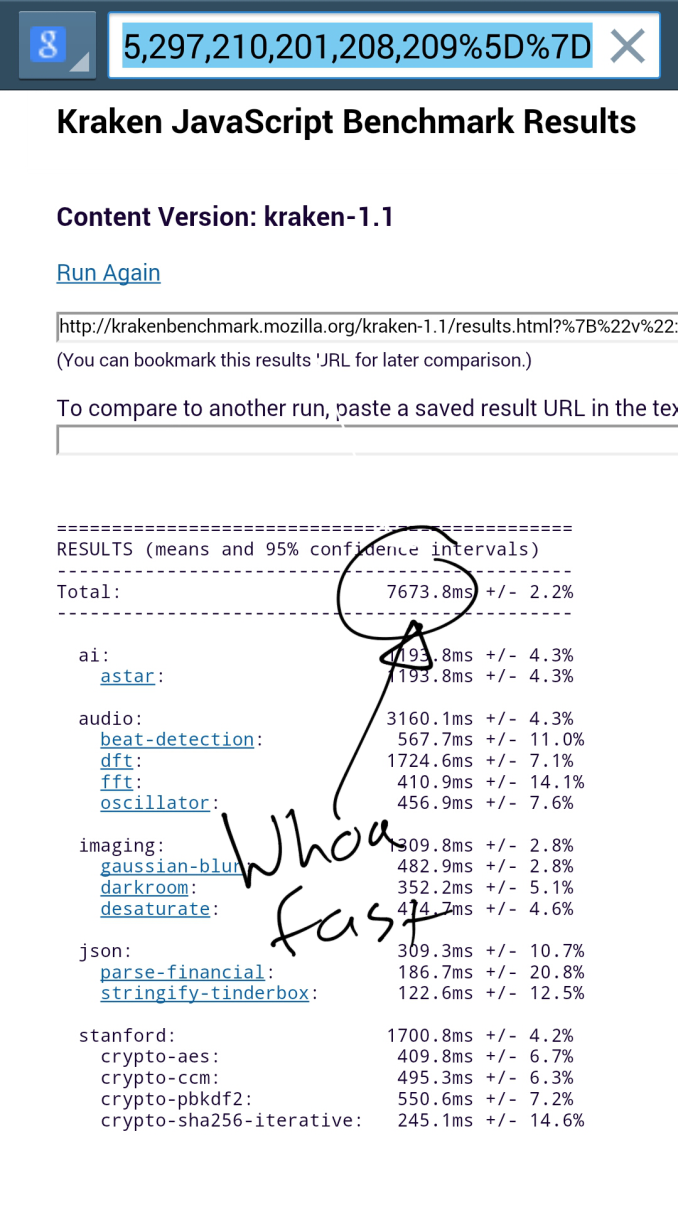
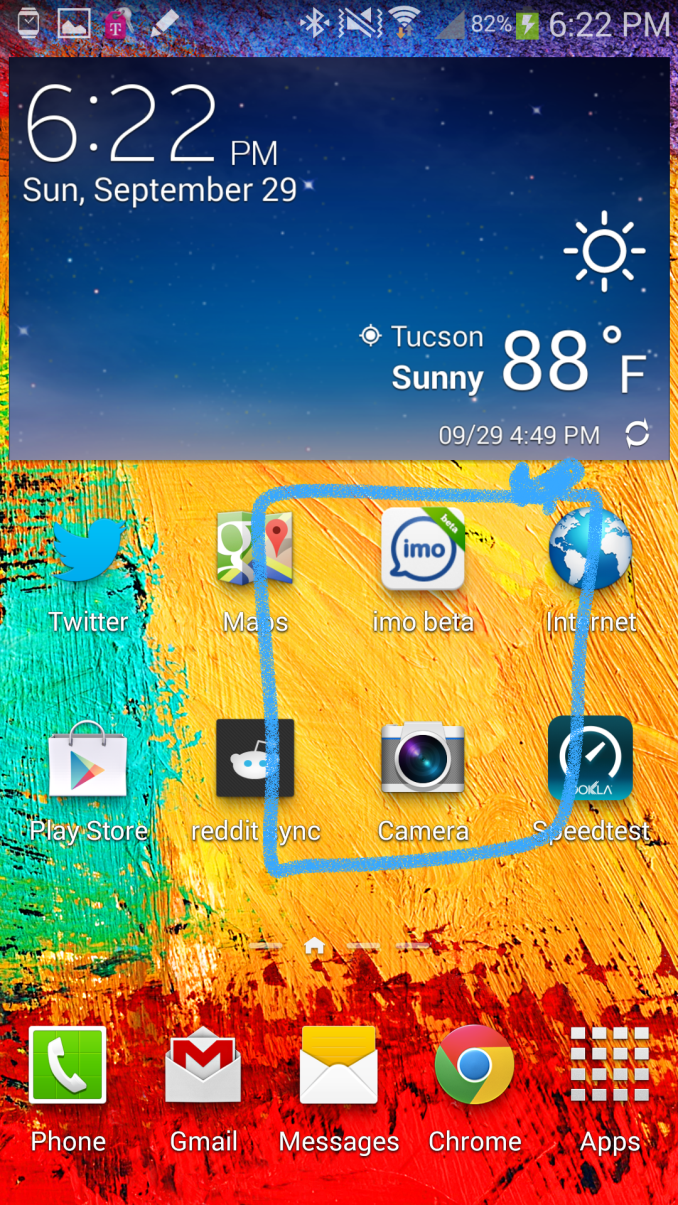
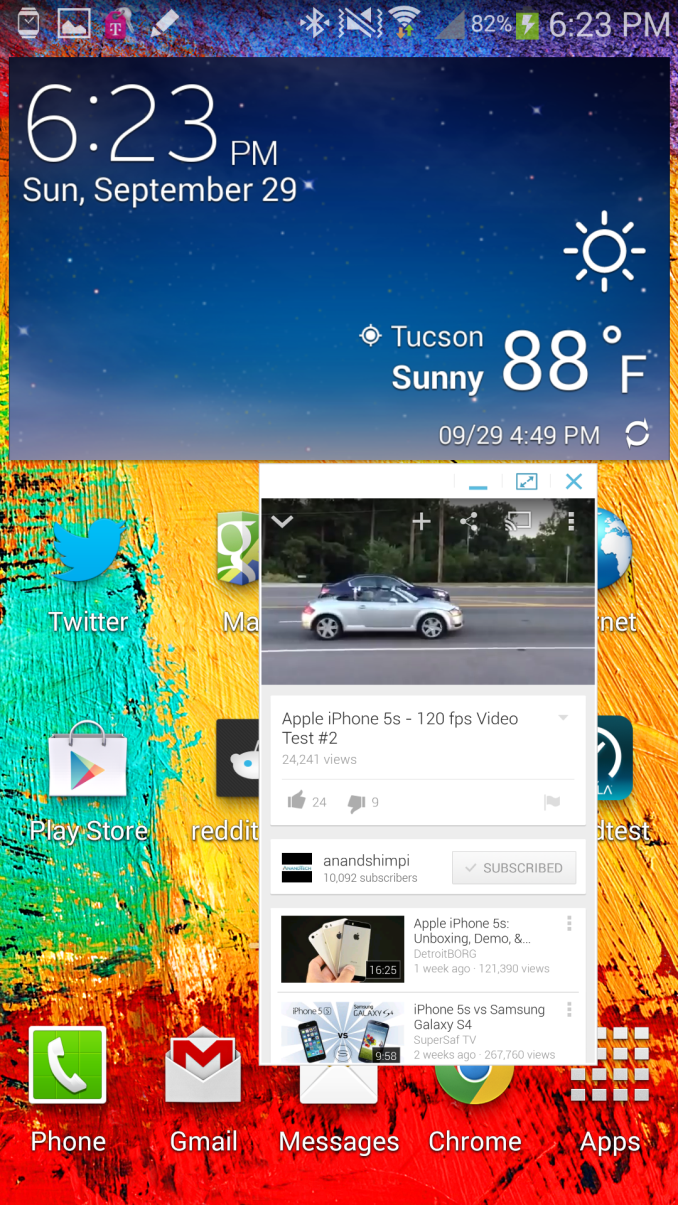
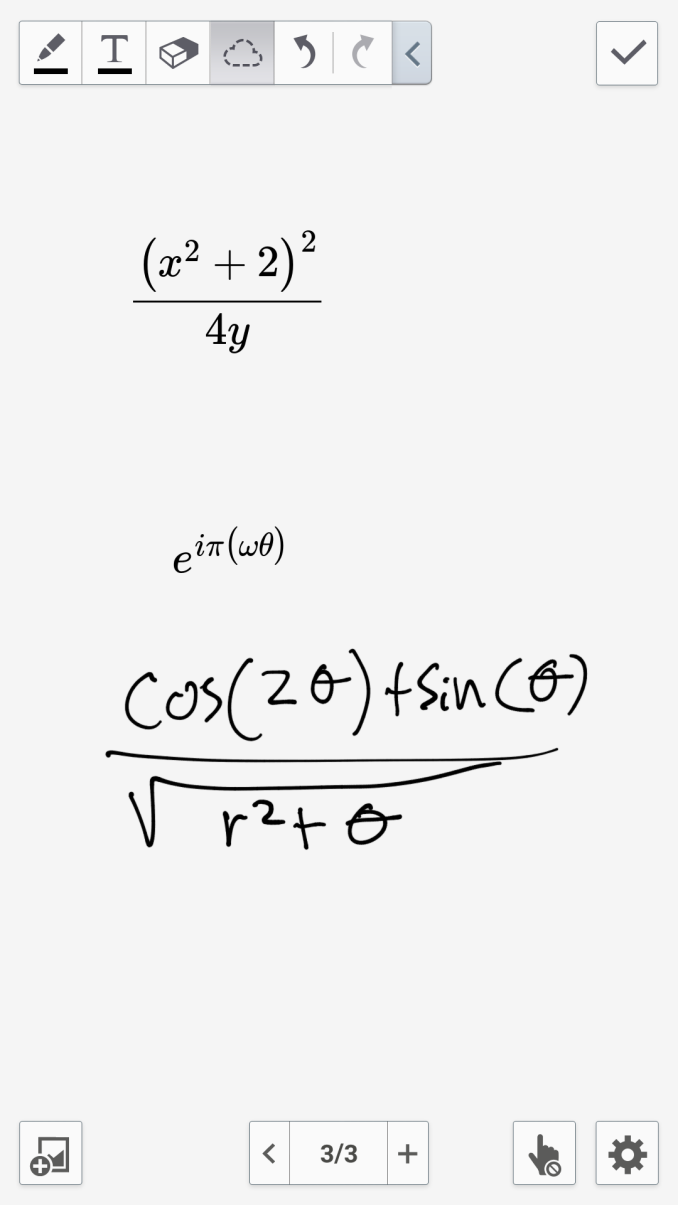
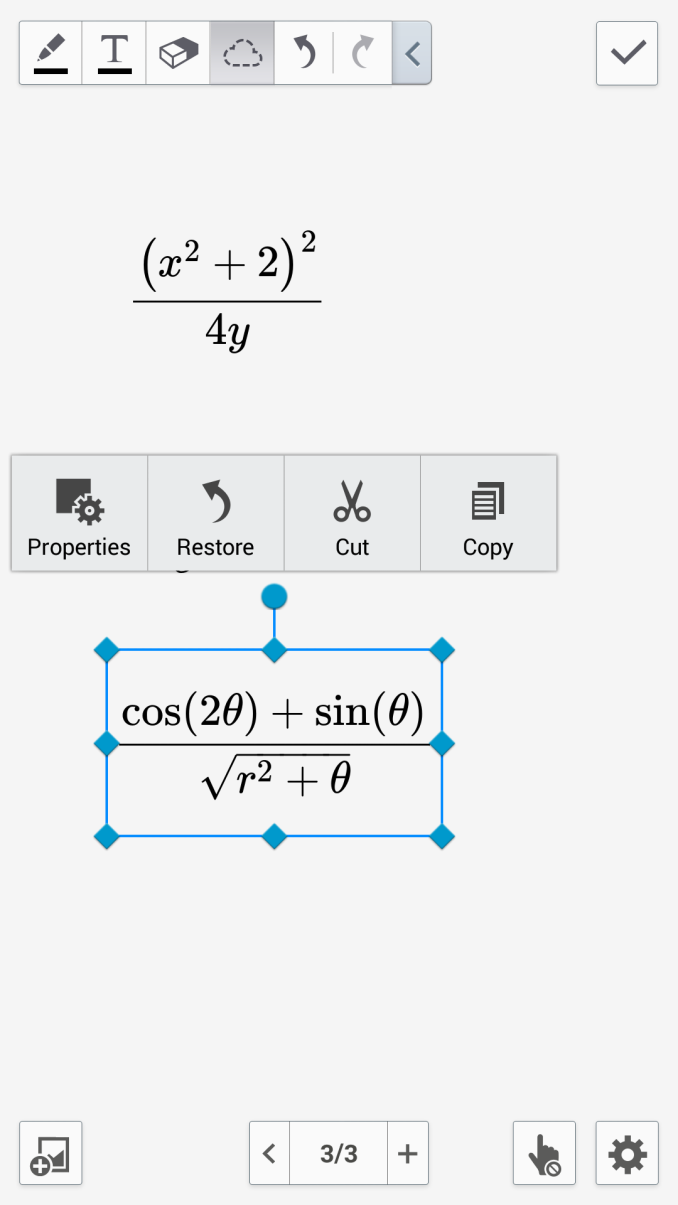








302 Comments
View All Comments
doobydoo - Saturday, October 19, 2013 - link
'The chipset IS in fact performing as the benchmark indicates'No, it isn't. The chipset CAN'T reach the same speeds for any non-benchmark application, for reasons such as battery life and heat.
Your argument that bickering about performance is redundant is also stupid, because if it was, Samsung wouldn't feel the need to cheat them.
esterhasz - Wednesday, October 2, 2013 - link
I would be much in favor of standardized qualitative testing. Have a set five people panel use the phone for a day in their normal workflow and use a questionnaire for performance rating. Sure it's subjective, but users are subjects last time I looked.Demigod79 - Thursday, October 3, 2013 - link
Although I too would like to a cheat vs non-cheat result in benchmarks (perhaps mark out cheat results in a different color or something), Anand did state clearly that this was cheating. There was no glossing over this fact, he laid it out explicitly and said that he wanted this practice to stop (for all OEMs that do it).He also mentioned that it's unlikely that OEMs will stop doing this. It's easy for the OEMs to do and makes their products look better (and frankly, it's only technical geeks who care about things like this, and we only represent a tiny segment of smartphone buyers). If it sells more products, then they will do it (although I find it about as frivolous as the Nvidia and then-ATI battle to have the fastest GPU, simply for the sake of wearing the performance crown for a couple of months).
That being said though, this is benchmarks we're talking about here. Benchmarks do not represent real-world usage, and never have. All you have to do is look at 3DMark, which was criticized for some time as being too artificial (CPU speeds hardly mattered, whereas in real life CPU speed matters greatly). Benchmarks are, by nature, highly artificial tests meant to measure performance in a specific area. Although you can complain that cheating in benchmarks give a false impression of performance compared to other devices, you cannot say that such cheating misrepresents real-world usage since it doesn't represent real-world usage in the first place.
DanNeely - Tuesday, October 1, 2013 - link
"The impact is likely small since most of these tests should drive CPU frequencies to their max state regardless (at least on the CPU side), but I'm going to make it a point to call out this behavior whenever I see it from now on."Unfortunately this isn't the case. By decompiling benchmarks and changing package names to disable the cheat function Ars Technica discovered that the GN3 is inflating benchmark scores by 20-50%. Most got a 20% boost; Linpack was an outlier at 50%.
http://arstechnica.com/gadgets/2013/10/galaxy-note...
Anand Lal Shimpi - Tuesday, October 1, 2013 - link
This is unfortunately something we've seen on a lot of devices, not just Samsung. Google Experience devices aren't affected, but we've seen it on the SGS4 and HTC One among others.Linpack isn't a very consistent test and it's too short to drive frequencies up consistently, which is why I'm guessing it's an outlier. The 20% end is higher than expected, it's entirely possible that Samsung is lifting a thermal limit as well as driving CPU frequencies up.
I don't like any of it and I do want to see companies stop doing it. I was hoping we would see an end to it with the Note 3 but it looks like that was wishful thinking.
Take care,
Anand
Wojciech - Tuesday, October 1, 2013 - link
Have you thought about doing an article about 'fixing' benchmark scores by other OEM's?If you're saying that HTC is doing the same with One then maybe LG is doing something similar and maybe even Sony.
Normal behavior by Google experience devices would explain often lower scores than customized devices running on the same hardware platform.
Don't you think that would be an interesting topic to examine?
Right now I fear that more and more OEM's are going to start doing the same thing and the whole 'benchmark to determine real life performance' will be completely lost.
xype - Wednesday, October 2, 2013 - link
You don't like any of it? But you still put up the graphs and numbers with an "Oh my."? People come here because AnandTech has a reputation of providing in-depth, honest reviews. Most people scan the text and go right to the graphs. Their takeaway will be a marketing lie that you didn't bother to correct because "A lot of companies do that."? Seriously?Spunjji - Tuesday, October 8, 2013 - link
If you skim the text and go to the graphs you will never, EVER get a representative review of anything. People come to Anandtech for analysis and they got that with this review. If they missed that then they might as well have gone to any of the other sites.doobydoo - Saturday, October 19, 2013 - link
Na, most people come to Anandtech because they know the graphics will have been performed in an objective and logical way. I would bet that the vast majority of readers don't read the text associated with such images.And that doesn't mean that they should go to other sites.
Squuiid - Tuesday, October 1, 2013 - link
"It's also interesting to note that the Galaxy Note 3 appears to outperform all other Snapdragon 800 smartphones we've tested thus far. There's a couple of potential explanations here."You missed an explanation: Samsung cheat.
From Ars:
"The two functions applied to this list seem to be "PACKAGES_FOR_BOOST_ALL_ADJUSTMENT" which is no doubt the CPU booster, and "PACKAGES_FOR_LCD_FRAME_RATE_ADJUSTMENT" which makes it sound like they are also changing the display frame rate."